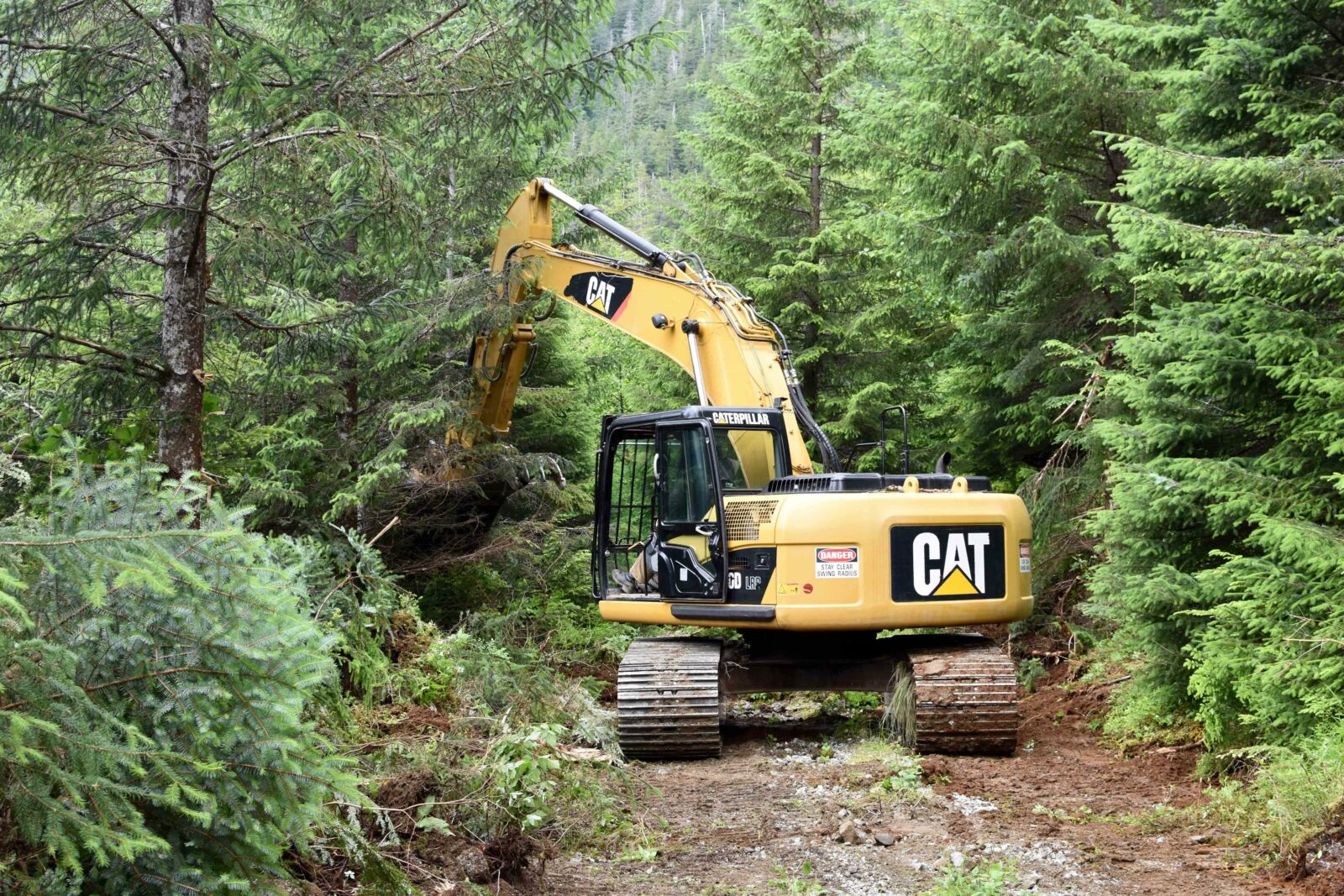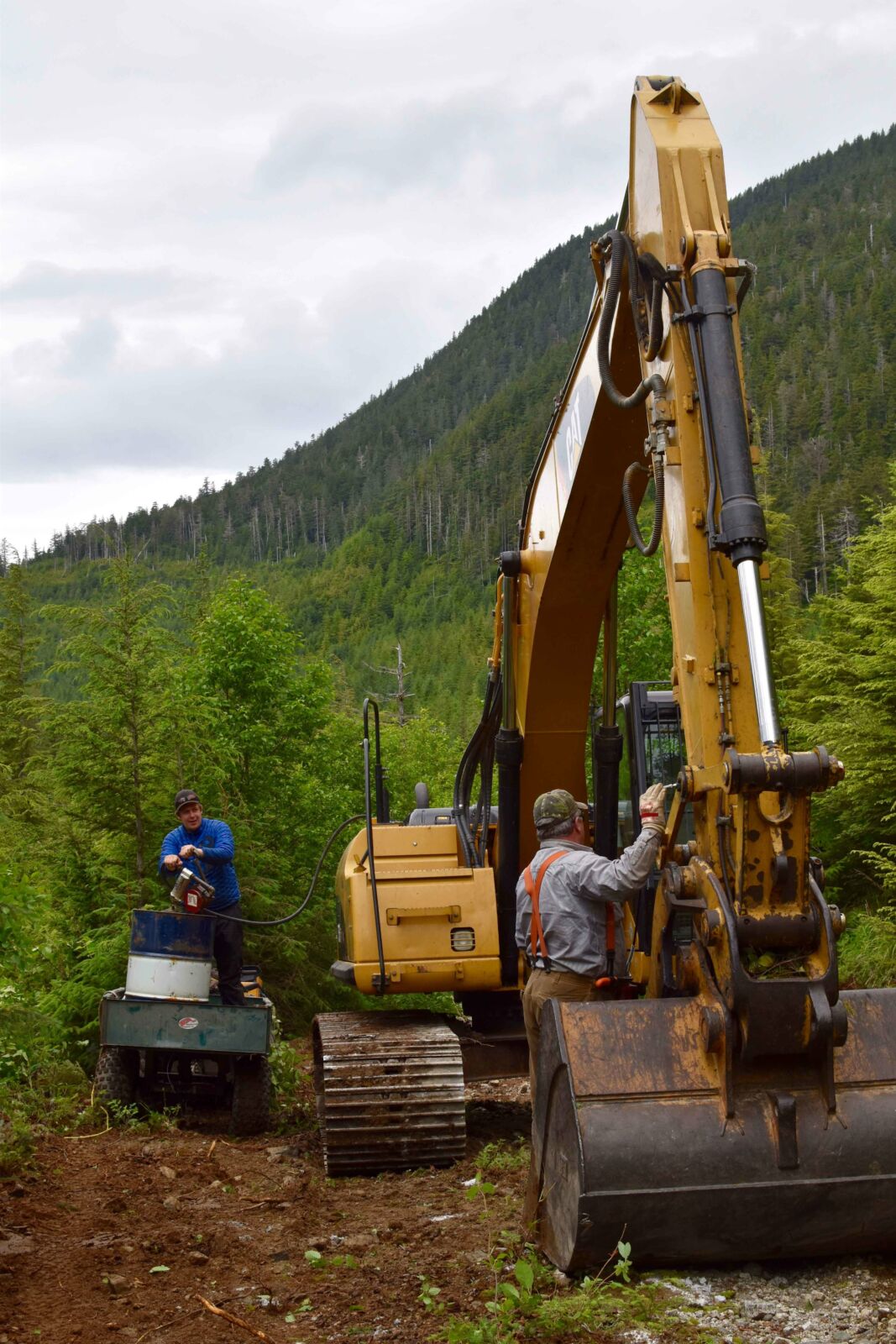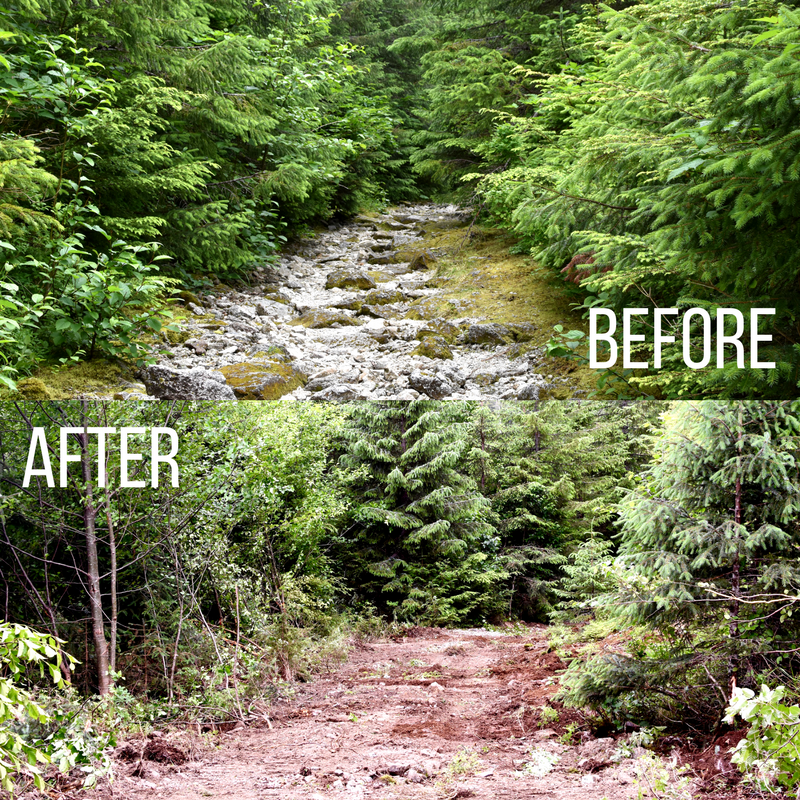Visible from the streets of Sitka and known for the striking silhouette of Mount Edgecumbe, the uninhabited volcanic island of Kruzof is more than just an iconic landmark. As part of the Tongass National Forest, Kruzof Island is a public recreation and fishing destination.
Kruzof’s lakes and streams support healthy runs of coho, chum, and pink salmon, as well as Dolly Varden char. Outfitters and guides bring tourists to Kruzof for ATV tours and Alaskan fishing adventures. Local Sitkans enjoy the island as an accessible getaway for hiking, fishing, and ATV riding.
But unmaintained ATV trails on Kruzof threatened both fish habitat and the recreation experience. Erosion had redirected streams straight down the trail and widened the areas where streams cross the trail, making them too shallow for fish to swim across. Old rusty culverts were too high off the ground and too narrow for fish to pass through them to swim upstream.
But unmaintained ATV trails on Kruzof threatened both fish habitat and the recreation experience.
The trail itself resembled a streambed, rocky and overgrown. When riding your ATV, you had to hold up your arm to stop the branches from hitting your face as you slowly rolled over rocks resembling small boulders. A lack of good trails restricts public access to key fishing destinations and fish access to upstream spawning and rearing habitat. It’s not much fun—for humans or fish.
When local Sitkans identified repairing trails on Kruzof Island as a restoration priority, the Sitka Conservation Society (SCS) got to work coordinating on-the-ground solutions. With funding from the National Forest Foundation’s Alaska Forest Fund, SCS worked with the U.S. Forest Service to repair the trails.

Photo by Maia Mares

Photo by Maia Mares

Photo by Maia Mares
TM Construction, a local contractor with years of experience and expertise in local stewardship projects on Kruzof and elsewhere, completed work on the trails this summer. For ten days in July, Todd Miller and his son and daughter, Tyler and Ariel Miller, lived on their boat at Kruzof Landing. They spent their days hard at work on the trail as they:
- reshaped stream crossings,
- installed new culverts to let fish pass beneath the trail, and
- improved the trail by smoothing the surface and cutting back vegetation.
The result? A smoother, more accessible trail that’s much more fun to ride, complete with restored stream habitats that will eventually see fish return to upstream areas they haven’t been able to access for years. In this local victory for habitat restoration and recreation, both fish and people win.
LEARN MORE ABOUT THE ALASKA FOREST FUND.

